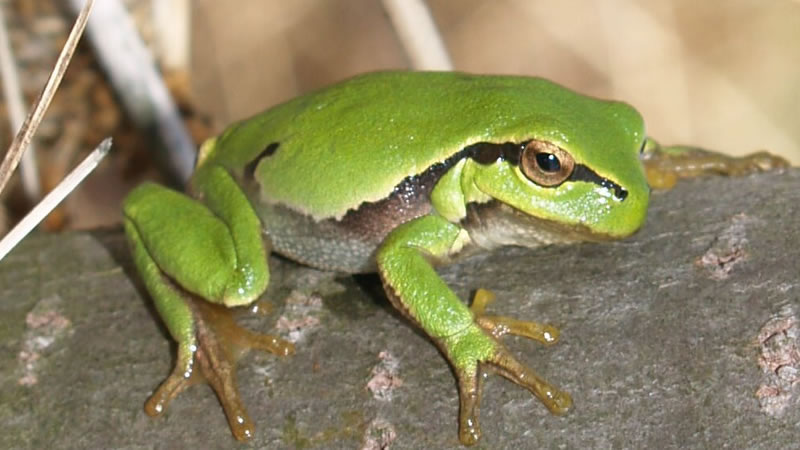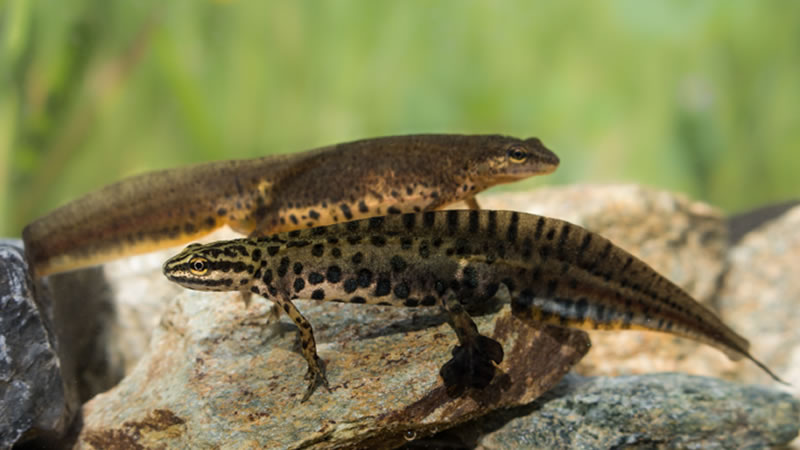
European tree frog (Hyla arborea)
This is a species that is very common in almost all of Europe. It is protected by the Bern Convention as a species of fauna under protection. It prefers to stay close to water at all times and will rarely be seen more than 5 meters from the nearest shore. It hunts during the day and only during the mating season it becomes nocturnal. Males reach a length of 10 cm while females up to 15 cm and live up to 11 years. The main mating season is from April to June. Males reach breeding age in 2 years and females in 3. Females lay a few hundred eggs and in a year they can lay up to 10,000 eggs. They spawn in balls and stick them to plants near the river or lake shore. The eggs hatch in about a week and the transformation from tadpoles to frogs takes place in 1 – 2 months (depending on the temperature).
They feed on beetles, flies, butterfly caterpillars and many other insects. Also small mice birds often and small of the same species. When they are still tadpoles they feed on algae but also small shellfish and other living microorganisms that live in the water. Sometimes they also eat smaller tadpoles, but also eggs of other aquatic insects or animals.
How to recognize it: Its color is yellow-green to green. It has faint streaks on the back and legs. It has very long hind legs and can make long jumps. Tubercles are numerous, small in size and inconspicuous. It has two line-shaped bumps on the back, usually of a lighter color.

